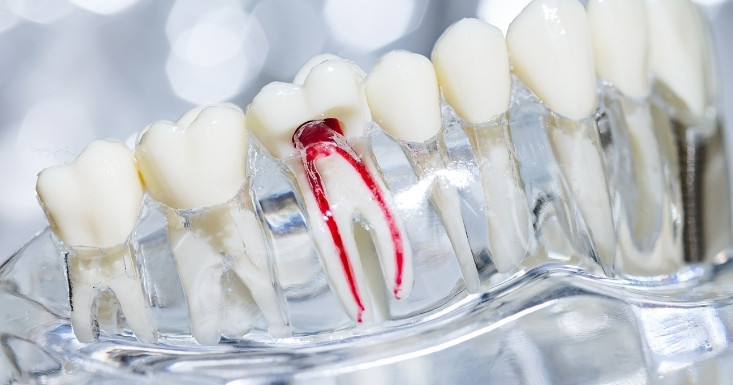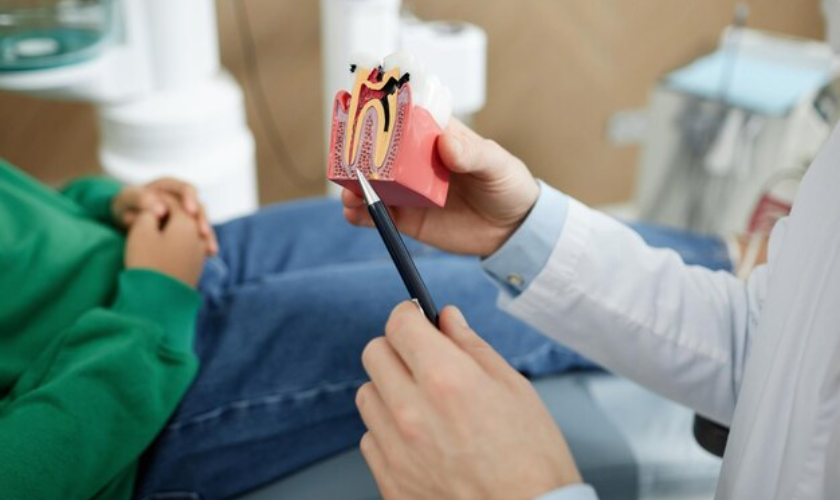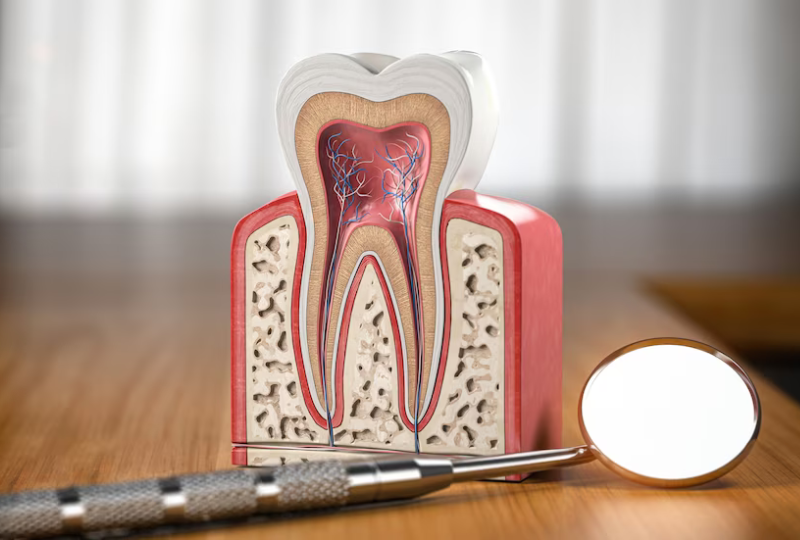4034 US-9 Howell, NJ 07731

A root canal is a common dental procedure that involves removing the inflamed or infected tooth root or pulp. As per the American Association of Endodontists, dental professionals perform over 15 million root canals each year.
If you need a root canal treatment, you must understand what the process does, how it works, and how to recover after this procedure. This guide will give you a comprehensive idea about root canal therapy.
What Does a Root Canal Do?
Root Canals are endodontic therapies that help remove infections in the tooth pulp, the innermost layer of your teeth. When bacteria inside your mouth invade the pulp inside your tooth and lead to inflammation, you will need this treatment. The pulp of your tooth may come under bacterial attack if:
- You have a deep cavity that needs treatment.
- You have a damaged or cracked tooth, and bacteria from plaque infects the pulp of your tooth.
It is to be stated that you can have infected teeth without symptoms. However, if you have symptoms, they may include:
- Swollen jaw
- Persistent tooth pain
- Swollen gums
- Discolored tooth
- Pimple on your gums
- Pressure hurts
- Loose tooth.
Dentists will clean and disinfect the surfaces inside the tooth and add a crown or filling to seal or cover the empty space to protect it. Patients mostly need this treatment when a cavity becomes abscessed or infected after being untreated for a period of time. In addition, if you have a damaged or cracked tooth, which is vulnerable to infection, you may need this treatment.
How Does a Root Canal Work?
Your dentists or endodontists will take x-rays of the affected tooth prior to beginning the root canal treatments in Howell. They will also conduct other tests to determine if your tooth pulp is inflamed, infected, or dead and confirm whether you need this treatment.
During the root canal, dental professionals will go through some major steps. The steps are stated below.
- Dentists will inject anesthesia to numb your infected tooth and nearby gum. They might provide you with medications that may help you relax if you have dental anxiety.
- After that, your dentist will place a thin and flexible piece of rubber over your infected tooth and nearby gums. This is a dental dam that keeps your tooth dry during the procedure.
- Next, they drill a tiny hole in the crown of your tooth to get to your tooth pulp.
- Once done, they use tiny dental instruments to remove blood vessels, tissues, and nerves inside your tooth pulp.
- Then, your dentist will clean and disinfect your pulp chamber and root canals after clearing the pulp out.
- After that, they will fill the empty pulp chamber and root canals with a rubbery and flexible dental material known as gutta-percha.
- Then, they will seal your tooth with a temporary dental filling. It will help prevent bacteria from getting into your tooth.
- Next, the dentist will place a dental crown on your treated tooth. It will help protect your teeth and restore your bite.
Recovery after Root Canal
The healing phase will take less than a week. However, you might encounter a little bit of mild discomfort for a few days.
You may eat after getting this treatment. However, dentists suggest waiting until the numbness wears off. Generally, anesthesia effects only last a few hours, and then you can eat.
However, you must only eat softer foods like applesauce, mashed potatoes, pasta, or yogurt during the healing phase. You need to continue this for a few days. Then, you can reintroduce solid foods back into your diet.
Do not bite or chew with the treated tooth. You have to try to chew on the other side of your mouth until the filling or crown is added during your follow-up appointment.
Avoid smoking after this treatment, as it can hamper your recovery. Brushing and flossing every day is a must. In addition, you have to use an antibacterial mouthwash to keep germs at bay.
If you need root canal treatment, contact us now. With us, you will get the best experience for sure.


